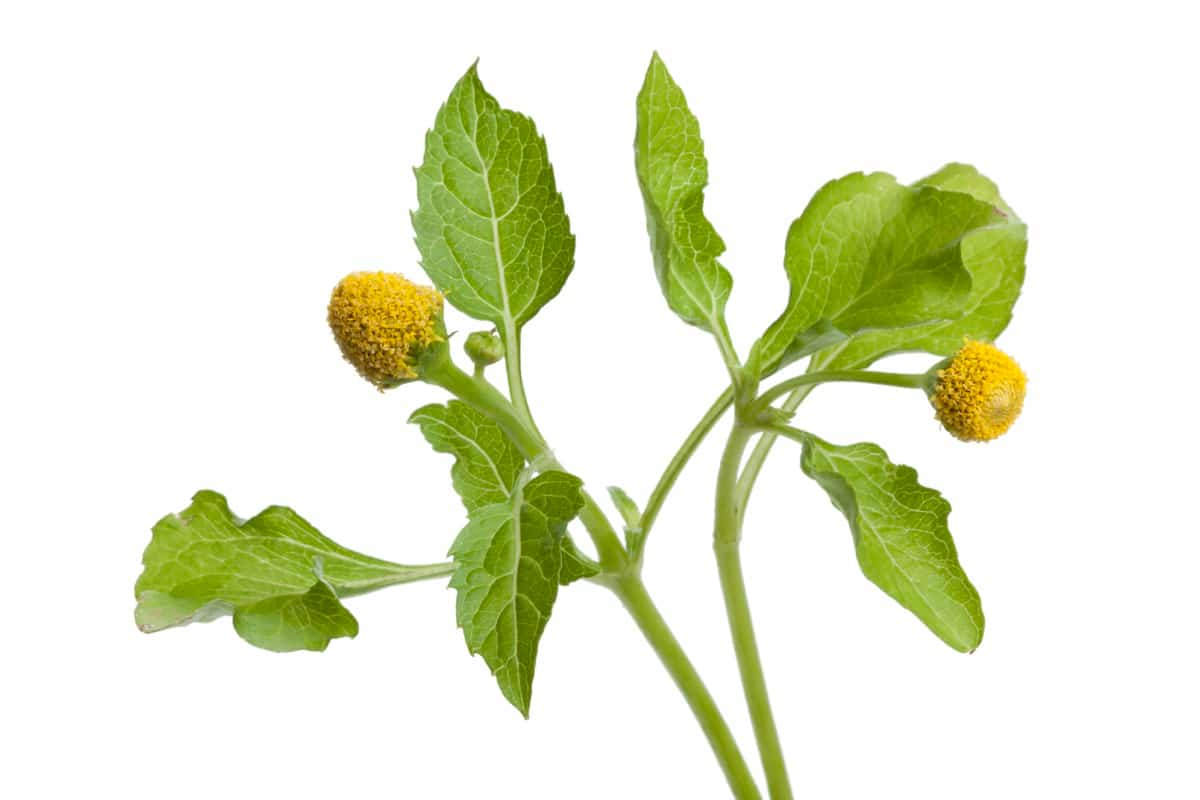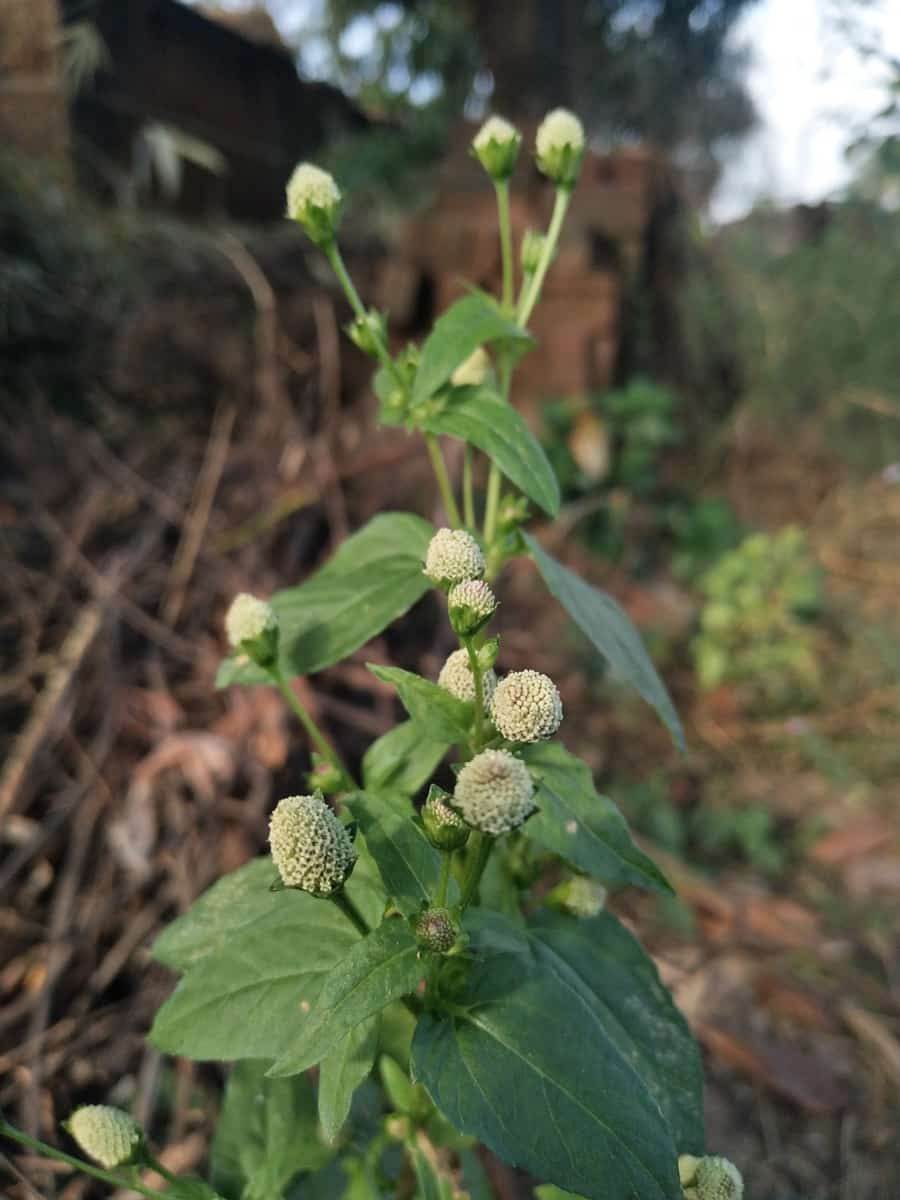Acmella oleracea, also known as Buzz Buttons, Electric Daisy, Eyeball Plant, Paracress, Sichuan Buttons, or Toothache Plant, is a fascinating species of flowering herb belonging to the family Asteraceae. This unique plant has gained attention not only for its vibrant blooms but also for its culinary and medicinal uses. If you want to add a unique and versatile herb to your garden, then Paracress is the perfect choice.

How to Grow and Care for Organic Paracress
Best Organic Soil Mix for Paracress Cultivation
Creating the best organic soil mix is essential for the optimal growth and development of your Paracress plants. Be sure to provide them with well-drained and fertile soil rich in organic content. To create a soil mix for Paracress plants, combine compost with the existing soil. Compost adds beneficial microorganisms and improves overall soil structure.
You can also add well-rotted manure or worm castings to enrich the organic content further. To maintain optimal fertility levels in your Paracress bed, consider adding natural amendments such as bone meal or blood meal before planting.
Step-By-Step Instructions for Growing Organic Paracress
Choose the right location – Find a spot in a garden for growing Paracress with full sun or partial shade. Paracress plants thrive in warm conditions, so ensure the area you choose has good airflow and is protected from strong winds.
Prepare the soil – Before planting Paracress, remove any weeds and debris. Loosen it by using a garden fork or tiller to ensure good drainage. Add organic matter to improve fertility and moisture retention.
Sow the seeds – Sow Paracress seeds directly into the soil, spacing the seeds about 6 inches apart. Plant them at about half an inch deep and cover lightly with soil—water gently after sowing to settle the seeds in place.
Watering and maintenance – Keep the soil moist during germination. Once established, Paracress plants are drought-tolerant but will benefit from watering during dry spells. Avoid overhead watering to prevent leaf diseases.
Thin out seedlings – When they have grown their first true leaves, thin them out so each plant has enough space to grow properly. Remove weaker seedlings, leaving only one sturdy plant every 12 inches.
Fertilize regularly – Feed your Paracress plants with organic fertilizers every four weeks throughout their growing season to promote healthy growth. This will provide essential nutrients for robust foliage production and flowering.
Information About Growing Organic Paracress
| Crop Name | Paracress |
| Family | Asteraceae |
| Plant type | Perennial |
| Light preference | Sun |
| Soil requirements | Well-drained soil |
| Uses | Bedding plants Containers Window boxes Use leaves in salads |
| Scientific name | Spilanthes oleracea |
In case you missed it: How to Grow and Care for Organic Peppermint: Guide for Planting to Harvest

Organic Paracress Care Tips for a Thriving Garden
- Mulching: Applying organic mulch around your Paracress plants helps retain moisture, suppress weed growth, and regulate soil temperature. Use materials like straw, wood chips, or compost.
- Pruning: Regularly trim any dead or wilted leaves to promote new growth and prevent diseases from spreading. Pinch off flower buds if you want to focus on leaf production.
- Fertilization: Use nitrogen-rich organic fertilizers to feed your Paracress plants every four weeks during the growing season. Compost tea or well-rotted manure are excellent choices.
- Pest control: Monitor your plants regularly for pests like aphids and caterpillars that may damage the foliage of your Paracress plants.
Organic Fertilizers for Optimal Paracress Growth
Organic fertilizers provide essential nutrients that promote strong root development, lush foliage, and abundant flower production. The best organic fertilizer for your Paracress plants is compost. It is rich in organic matter and nutrients that slowly release into the soil, providing a steady supply of nourishment throughout the growing season. Another choice for organic fertilization is worm castings. Sprinkle worm castings around the plant base and gently work them into the soil.
To boost your soil’s phosphorus levels, consider using bone meal as an organic fertilizer option. In addition to these options, seaweed-based liquid fertilizers can benefit optimal Paracress growth. Seaweed contains trace minerals, amino acids, vitamins, and natural growth hormones that stimulate root growth while increasing resistance against pests and diseases. Always follow package instructions when applying fertilizer to prevent overfeeding or burning your plants’ roots.
Watering Techniques for Organic Paracress Plants
- Water deeply: When it’s time to water, give your Paracress plants a thorough soaking. This will encourage deep-root development and help them withstand dry periods.
- Avoid overwatering: While Paracress enjoys moisture, excessive watering can lead to root rot problems or fungal diseases. Ensure the soil is moist by checking the top inch regularly before watering again.
- Use a drip irrigation system: Installing a drip irrigation system can be highly beneficial for maintaining proper moisture levels in your Paracress garden. It delivers water directly to the roots while minimizing evaporation.
- Water in the morning: Watering early in the day allows excess moisture on leaves to evaporate quickly, reducing the risk of fungal infections and other diseases.
Organic Pest Control Methods for Paracress Plants
- Companion planting: Intercropping your Paracress plants with insect-repellent herbs such as basil or marigold can help deter pests naturally. These companion plants emit a strong fragrance that acts as a deterrent against common pests.
- Neem oil spray: It is a natural insecticide derived from neem tree seeds. Dilute it with water and spray it on your Paracress plants to control aphids, whiteflies, and other sucking insects.
- Beneficial insects: Encourage beneficial predators like ladybugs, lacewings, or praying mantises into your garden to prey on harmful pests naturally.
Preventing Diseases in Organic Paracress Cultivation
Taking proactive measures can protect your plants from common diseases hindering their growth and development. Proper sanitation practices are essential. Ensure your tools and equipment are clean before working with your Paracress plants. Providing adequate air circulation is key. Avoid overcrowding plants, as this can create a damp environment conducive to disease development. Give each plant enough space to breathe and grow freely.
Additionally, regular inspection of your plants is vital in identifying any signs of disease early on. Look for symptoms such as wilting leaves, discoloration, or unusual spots. Prompt action can help prevent the spread of infection to other healthy plants. Natural remedies like neem oil or garlic spray can protect against pests and diseases in Paracress without harming the environment or compromising organic principles.
Companion Plants for Organic Paracress and Their Benefits
Basil: Planting basil near your Paracress can help repel aphids and other insects that may be attracted to your garden. Plus, both basil and Paracress make great additions to culinary dishes, creating a perfect pairing in your kitchen.
Marigolds: Known for their ability to deter nematodes, they make excellent Paracress companions. These vibrant flowers add beauty to your garden and act as natural pest repellents.
Nasturtium: Nasturtiums serve multiple purposes when planted near Paracress. Not only do they attract beneficial insects like ladybugs and hoverflies, but their pungent scent also helps repel pests such as whiteflies.
Chives: Another herb that pairs well with Paracress is chives. These aromatic herbs have been known to deter aphids while adding flavor and color diversity to your garden.
In case you missed it: Homemade Tomato Plant Fertilizer: Best Natural and Organic Recipes

Harvesting and Preserving Organic Paracress Leaves
Once your plants have matured, it’s time to reap the rewards of your hard work. The best time to harvest Paracress leaves is when they are young and tender, usually around 60-70 days after sowing. To harvest the Paracress leaves, snip them off at the base using sharp scissors or pruning shears. When preserving Paracress leaves, freezing is an excellent option to enjoy their unique taste all year round.
After harvesting, rinse the leaves thoroughly under cold water to remove dirt or debris. If you prefer dried herbs, air-drying is a simple method that retains flavor and aroma. Gather small bunches of Paracress stems and tie them with twine or string. Hang these bundles upside down in a well-ventilated area away from direct sunlight until they become crispy and dry. This way, you’ll always know how fresh they are when reaching your pantry for that unique flavor.
Conclusion
Growing your own organic Paracress at home can be a rewarding experience. With proper care, you can enjoy fresh leaves whenever you desire that distinctive flavor in your dishes. This fascinating plant adds an eye-catching element with its bright yellow flowers and offers a surprising flavor.
- Feed Your Flock for Less: Top 10 Tips to Save on Chicken Feed
- Ultimate Guide to Ossabaw Island Hog: Breeding, Raising, Diet, and Care
- Hatching Answers: The Top 10 Reasons Your Chickens Aren’t Laying Eggs
- Eggs and Economics: Breaking Down the Cost of Raising Backyard Chickens
- Defend Your Greens: Proven Methods to Keep Iguanas Out of Your Garden
- Ultimate Guide to Cinnamon Queen Chicken: A Comprehensive Guide for Beginners
- Ultimate Guide to California Tan Chicken: Breeding, Raising, Diet, Egg-Production and Care
- Ultimate Guide to Marsh Daisy Chicken: Breeding, Raising, Diet, and Care
- 10 Types of Chicken Farming Businesses You Can Start for Profits